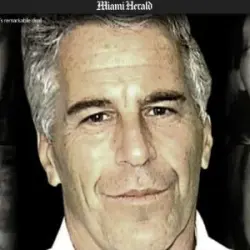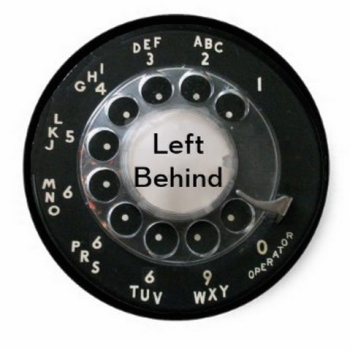From October 29, 2013, “Collection plates, the economy, and the 99 percent”
… Empty Tomb cites 1968 as the Good Old Days of bountiful generosity and overflowing collection plates, but even then church-giving only accounted for 3.1 percent of household income. I think that reflects the reality — contrary to what most pastors hopefully preach on Stewardship Sunday — that church-giving comes from members “extra” money. It’s not an expense that’s factored into household budgets, but an option for some of the disposable income left over after that budget has accounted for all of its expenses.
That’s a rational approach for most church members. After all, if you don’t pay the electric bill, they may shut off the lights. If you don’t pay the phone bill, they may cut off your phone. But you can still go to church even if you never put anything into the offering plate. Churches face the same free-rider problem that public radio has. Your local NPR station’s programming is “made possible by the support of listeners like you,” but you can always keep listening as long as enough of those other listeners are providing that support.
Empty Tomb’s Sylvia Ronsvalle suggests that churches might begin reversing this decline in giving by “providing an authentic alternative to the consumer mindset.” I’m not sure if I agree with that because I’m not sure what, if anything, that means.
On one level, I think that any church that fails to “provide an authentic alternative to the consumer mindset” ought to shut its doors for good. The gospel is not about seeking happiness by acquiring stuff. The gospel is actually an enormous hindrance to anyone seeking happiness by acquiring stuff (and vice versa). So, yeah, certainly churches ought to be, at a fundamental level, providing an authentic alternative to the consumer mindset.
But on another level, I think churches actually need to better understand and better address the concerns of “the consumer mindset.”
Church-giving is an economic transaction. Donors expect something in return for their donations — not necessarily, and not mainly, something for themselves, but they want to see results. Giving to your church, like giving to any charity, is like hiring a contractor to do good on your behalf. You want to hire someone who will get the job done — someone you can trust to put the money to good and proper and effective use. That concern may be a kind of “consumer mindset,” but it’s one that churches should be honoring by earning and rewarding that trust.
A “consumer mindset” might also constructively remind churches that their donors are also, in a sense, their customers. And in recognizing that, they should remember what the Chamber of Commerce long ago forgot: that what’s good for your customers is good for your business.
Too many churches have tacitly or explicitly been supporting the customer-killing economic policies of the Chamber of Commerce and other perverse business interests who see themselves in a zero-sum competition against the working people — their employees and customers — without whom they’re unable to sell anything. The Dow Jones index has come roaring back to record highs after the Great Recession. Church-giving has not rebounded because employment and wages have not rebounded. Church-giving corresponds with the fortunes of the 99 percent, not with the fortunes of the 1 percent.
Churches ought to be fighting for the concerns of the 99 percent rather than the interests of the 1 percent. That’s true as a matter of basic justice — which ought to be an essential aspect of Christian mission and identity. But it’s also true as a matter of self-interest, because when the 99 percent suffers, so does church-giving. (And when the 99 percent thrives, the 1 percent will also do very nicely for themselves — even better than they’re doing due to their current zero-sum strategy of rent-seeking plunder.)
Just look at the absolute dollar amounts in Empty Tomb’s study: “In 2011, the 23 denominations researched by Empty Tomb received $22.94 billion. In 2010 they received $22.88 billion.”
That’s a lot of money, but let’s put it in perspective. Those churches received about $23 billion in 2010. That same year American consumers lost $36 billion in “overdraft protection” fees and charges — a direct transfer of wealth from working people to the 1 percent that was more than 50 percent higher than total church giving for the Protestant denominations in Empty Tomb’s survey.
That wealth-transfer from workers to bankers is expected to be somewhat less this year — down to about “only” $30 billion, thanks to opt-in regulations put in place by the Consumer Financial Protection Bureau. Richard Cordray will be saving working Americans about $6 billion this year with just that one change. That’s a $6 billion increase in that pool of “extra” money from which offering plates are filled.
But are churches supporting the CFPB? No — they tend to be aligned with the political movement angrily opposing the agency and defending ever-greater wealth-transfers from workers to bankers. (And they’re doing this, obscenely, in the name of “morality” and “values.”)
Consider Anglican Archbishop Justin Welby’s campaign to put payday lenders in England out of business. Welby is doing this, primarily, as a matter of justice and compassion for the working poor who are being preyed on by usurers. Most of those victims probably aren’t Anglicans with perfect attendance records, and I’ve seen nothing to suggest that Welby or anyone else involved in this campaign is even slightly motivated by a concern for the effect that predatory lending has on church-giving.
Yet surely predatory lending also does deter church-giving. It may have nothing to do with the motives for this campaign, but if Welby is successful, then Britain’s working poor will have a bit more money in their pockets, and people with a bit more money in their pockets are more able to put some of it in the offering plate.
People with empty pockets can’t and won’t ever do that.












